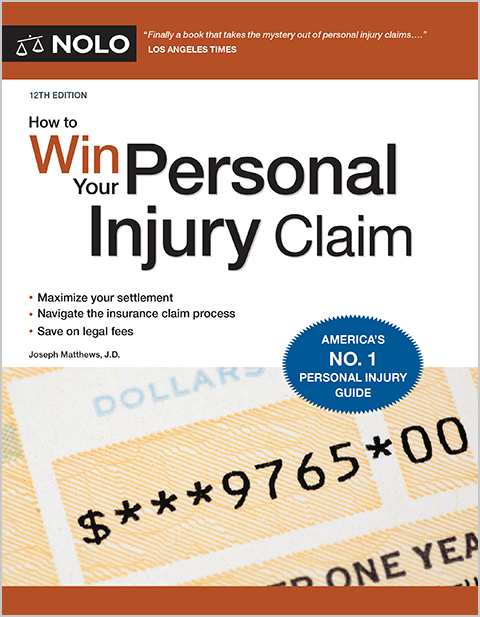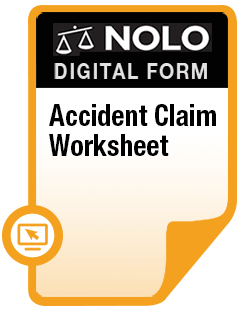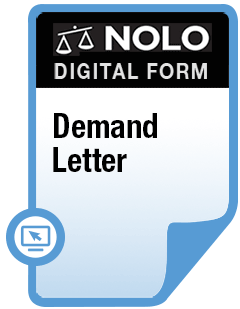With a contingency fee agreement, your personal injury attorney gets paid only when you recover compensation via settlement or court judgment.
Attorneys typically receive compensation for the legal services they provide. Law firms are businesses after all. But after a car accident, slip and fall, or other incident that could lead to a personal injury claim, you could find yourself in need of legal representation, and without the money to pay for an experienced lawyer.
The "contingency fee" arrangement between an attorney and their client exists for exactly this reason. But how exactly do these agreements work? Read on for the details.
What Is a Contingency Fee In a Personal Injury Case?
A contingency fee is a type of payment to your attorney that only occurs when you receive some kind of monetary recovery in your case—your personal injury case settles or you win your case at trial. To put it another way, with a contingency fee, payment for your attorney's services is "contingent upon" your receiving some amount of compensation.
What is the Standard Contingency Fee In an Injury Case?
When you officially hire a personal injury lawyer under a contingency fee arrangement, they'll take an agreed-upon percentage of your recovery. This percentage is often around 1/3 or 33%, but the exact amount your attorney gets paid will depend on a variety of factors. The three biggest are typically:
- the complexity and risk involved in your case
- who pays for litigation costs and when, and
- whether the agreement includes a "sliding scale."
Complexity, Risk and Your Lawyer's Contingency Fee
The more risky or complex a case is, the higher contingency fee percentage your attorney is likely to request. A riskier or more complicated case may require you to pay a higher percentage of the recovery, say 35% to 40%. On the other hand, a relatively straightforward case that's highly likely to end in recovery may result in a lower contingency fee percentage, perhaps 20% or 25%.
The Contingency Fee and Litigation Costs In an Injury Case
Even if an attorney is willing to work for free (also known as "pro bono"), there are always costs associated with bringing a personal injury lawsuit. These costs can include:
- Court and filing fees. For example, it costs about $400 to file a complaint in federal court.
- Discovery costs. For example, a deposition requires hiring a court reporter and paying for a deposition transcript. A deposition lasting eight hours can easily cost up to $1,000, and many civil lawsuits require several depositions.
- Expert witnesses. Expert witnesses can potentially charge as much as your attorney. You can expect one expert witness to charge at least a few thousand dollars to review your case, prepare a report and testify at trial.
- Obtaining evidence. Getting copies of public documents, medical records, etc. can add up to a few hundred dollars in a single case.
- Overhead and incidentals. In a case involving many documents, copying and postage costs can add up to a few hundred dollars.
If you win your case, you'll usually be the one to pay these costs. However, whether your attorney takes the contingency fee percentage before or after these costs are paid can make a significant difference in how much you and your attorney ultimately receive. For example, let's say:
- you win your case after trial
- the jury awards you $100,000
- your litigation costs are $15,000, and
- your attorney's contingency fee percentage is 30%.
If litigation costs are deducted before your attorney takes the contingency fee percentage, your attorney gets $25,500 (30% of $85,000) and you get $59,500 ($85,000 minus $25,500).
But if litigation costs are deducted after your attorney takes the contingency fee percentage, your attorney gets $30,000 (30% of $100,000) and you get $55,000 ($70,000 minus $15,000). In this example, the timing of litigation cost payments results in a $4,500 difference.
Learn more about "costs" in a personal injury case.
What Is a "Sliding Scale" Contingency Fee?
There are usually two different kinds of "sliding scale" arrangements when it comes to contingency fees in personal injury cases.
In the first version, the percentage that the lawyer takes varies depending on when the injury case is resolved. So, for example, the attorney might agree to take:
- 30 percent if the case settles before a lawsuit needs to be filed
- 35 percent if the case settles after a lawsuit is filed, and
- 40 percent if the client wins in court after a trial.
In the second type of "sliding scale," the percentage that the attorney takes as a fee varies depending on how much money is recovered via settlement or after a successful trial. So, for example, the lawyer might agree to take:
- 45 percent of the first $15,000 recovered for the client
- 35 percent of the next $30,000, and
- 25 percent of anything over $50,000.
What Are the Pros and Cons of a Contingency Fee Agreement?
The biggest "pro" to being represented under a contingency fee arrangement is that you don't have to pay for your attorney's services unless you win. That's obviously a huge consideration for most clients.
What about the "cons"?
First, contingency fee arrangement will sometimes result in your attorney getting paid more than if you had paid them by the hour. This is especially true in relatively clear-cut personal injury cases that might only require a few phone calls and letters to settle. Of course, it's tough to put a value on the leverage that comes with having an experienced attorney make those calls and sign those letters.
Second, because the attorney gets nothing if you lose your case, lawyers may be unwilling to take a less-promising case even though it still has a chance of success. If an attorney turns down the opportunity to represent you, it's always a good idea to keep shopping around for a second (and perhaps third) opinion.
Are There Variations on a Standard Contingency Fee?
In addition to the "sliding scale" we discussed earlier, two common variations of the traditional contingency fee arrangement are contingency hourly and mixed hourly-contingent.
In a contingency hourly arrangement, you don't need to pay your attorney until there is a recovery. However, your attorney will keep track of the hours worked, and if you receive compensation you will pay your attorney an hourly rate. For instance, if you win your case, your attorney charges $250 per hour and your attorney spent 10 hours on the case, you'll pay your attorney $2,500. You don't pay this $2,500 amount unless you obtain a recovery.
The contingency hourly arrangement is typically only used when your lawsuit is subject to laws that allow the winning side to recover attorney's fees from the losing side.
In a mixed hourly-contingent arrangement, you are only immediately required to pay for part of your attorney's normal hourly rate, with the remainder paid only if you obtain a recovery. For example, if your attorney bills you at $250 per hour, you may only need to pay your attorney $50 per hour until you obtain a recovery. Only from your monetary recovery do you pay the remaining $200 per hour to your attorney.
With a mixed hourly-contingent set up, your attorney will also probably get a percentage of the recovery on top of the attorney's hourly rate. However, this percentage will usually be significantly smaller than a typical contingency fee percentage.
Getting More Information and Help After an Injury
Check out these additional Nolo resources on hiring a personal injury lawyer to help you get the best result for your claim—and understand how injury lawyers typically get paid:
- How Personal Injury Lawyers Get Paid
- How Can I Find a Lawyer Who Will Work on Contingency?
- When Do You Need a Personal Injury Lawyer?
- Should I Handle My Own Personal Injury Claim?
- How to Be a Good Personal Injury Client
If you're ready to look for help now, get details on finding the right injury lawyer for you and your case.


